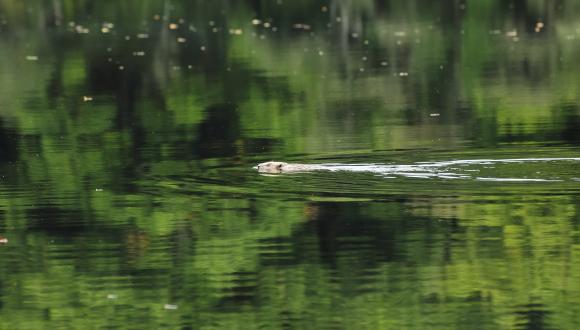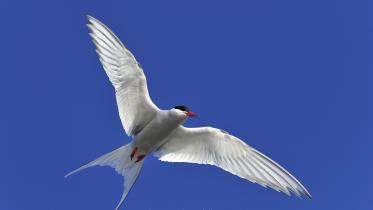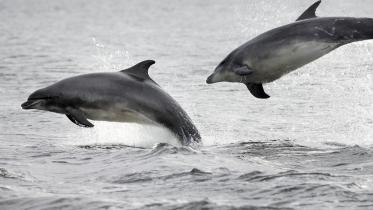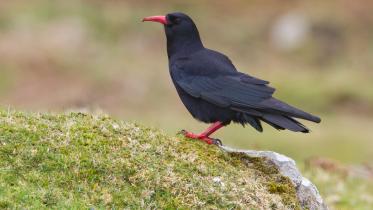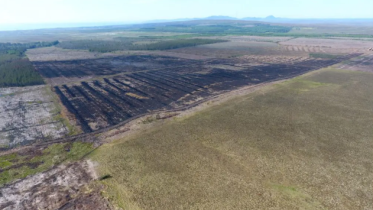Guidance - Managing the impacts of beavers in Scotland
Guidance for land, property and infrastructure managers.
Published: 2019
Introduction
Scottish Ministers agree that Eurasian beaver populations originating in Argyll and Tayside can remain and that beavers will be allowed to expand their range naturally from these areas. On 1st May 2019 the beaver became a European protected species, receiving protection under Scots law.
However, beaver activity - building dams, burrowing or foraging - can impact on a range of interests and so it is important that provision is made to intervene and manage these impacts to prevent damage. Some types of intervention have to be carried out under a licence from NatureScot as beavers are protected by law. For example, you will need a licence to kill or trap beavers, or to damage or destroy their breeding sites or resting places. NatureScot is responsible for beaver licensing.
This document describes where to get advice, the interventions and management actions that do and do not need a licence and how we will consider and administer licences to manage the impacts of beavers. We will review this document on at least an annual basis as our knowledge and experience of dealing with beaver casework grows.
Getting help and advice
We can provide advice by email or over the phone to help you to make the appropriate decision on what to do next, if you find that are affected by beaver activities. Sometimes a site visit may be necessary and, if so, we can arrange one to provide free expert advice. The site visit will help determine how beavers are using the area, the management options available and any licensing requirement.
In emergency circumstances where there is an imminent risk to public safety or serious damage to land/property, contact the Beaver Team on: [email protected].
How to manage beaver impacts
Beavers can have a range of impacts on a range of interests. There are a number of different ways to manage these impacts, from fitting protectors to trees to manipulating or removing dams to carrying out lethal control. These techniques are discussed in more detail in Annex 1. Which technique to use will depend on the circumstances. Some of these actions require a licence, but many do not.
Whatever the situation you can call the helpline for advice to help understand the possible impacts and get expert advice. You should certainly contact the helpline if you propose to do anything that might require a licence. If you are in any doubt then get in touch.
Actions that do not require a licence
- Carrying out ongoing land management activities near lodges, burrows or dams (providing they don’t damage those structures) e.g. ploughing a field next to a beaver lodge
- Discouraging dam building e.g. through fencing
- Removing new dams (less than 2 weeks old), notching or installing flow-devices to them.
- Protecting banks from burrowing activity
- Destroying short burrows with no end chamber
- Infilling channels/canals created by beavers
- Fitting protectors to vulnerable trees
- Fencing off areas to keep beavers out e.g. from crops or woodland
Actions that do require a licence
- Removing older dams (more than 2 weeks old), notching or installing flow devices to them
- Destroying lodges or chambered burrows
- Trapping and relocating beavers
- Lethal control
Notes
- See Annex 1 for guidance on beaver management techniques.
- If other protected species may be present or if activities could affect a designated site qualifying interest then please contact NatureScot even if a licence is not required.
- Sometimes management of older dams may be able to be carried out without a licence, but determining this will require expert advice, which NatureScot can provide.
- Removal of beaver dams using hand tools and or ropes/ grapnels does not require authorisation from SEPA, nor does removal using bank-based machinery. Use of in-stream machinery may require a CAR licence from SEPA.
Licensing assessment
In order to issue a licence we have to be satisfied that three legal ‘tests’ are met. These tests are summarised below together with details on how we will assess them.
Test 1 – Licence purpose
We issue licences for purposes set out in the legislation: these include for preventing serious damage to certain interests such as crops, timber or fisheries, for public health and safety reasons or other important social, economic or environmental purposes which are in the public interest and for conserving natural habitats or wild animals.
This means that there has to be a legitimate problem that needs addressing. To help us consider if this test is passed we may rely on information we already have, your own information and/or the information gathered by the expert adviser from a site visit.
In certain situations which may be particularly vulnerable (e.g. dam building affecting areas of prime agricultural land* or sensitive in-stream infrastructure, flooding public transport infrastructure, damage to protected features on Natura sites or burrowing into flood embankments) we consider that this test is likely to be met.
* Prime agricultural land here means land classes 1, 2 and 3.1
Test 2 – Alternatives
We issue licences as a last resort. This means we have to be assured that other possible actions that would either not require a licence or have less impact on beavers, have either been tried or are not likely to resolve the problem. Again we will rely on information from the affected person, the expert adviser and previous experience to help us judge whether this test is passed.
We accept that there will be situations where there is no satisfactory alternative other than to issue a licence for lethal control. These situations include where there is serious damage (or the risk of it) to prime agricultural land, and where we know alternative mitigation measures either have not or will not address the problem.
Test 3 – Conservation impact
We have to ensure that licensed actions do not harm the conservation status of beavers in Scotland and so will not affect population trends or the overall range of beavers. In the first instance we would follow the principles above in that those actions with the lowest impact on beavers that solve the problem must be considered first. Where we licence lethal control of beavers we will monitor the cumulative impact of this management.
Given the evidence from recent survey information that beavers continue to expand their range even with ongoing lethal control in places, we are confident that the actions we licence will not be detrimental to the conservation status of beavers and so this test is likely to be met. We will maintain an oversight of the cumulative impacts of what we licence and the population dynamics and range of the Scottish wild beaver population to ensure that this is the case.
Licensing in Practice
If you think you need a licence, or even if you are not sure, then you should call the licensing helpline on 01463 725364 or email [email protected]. We can provide advice over the phone and organise a site visit to look at the specific issues you face and offer tailored advice to help manage the impacts of beavers. We can also issue emergency licences for particularly vulnerable and urgent situations.
Licensing on Prime Agricultural Land
Where beaver activity damages agricultural interests on areas of PAL, and alternative actions would not be effective, then the three licensing tests will have been met. Therefore if you are experiencing problems from beaver activity affecting PAL or anticipate that you are likely to have problems in the future then you should contact us. Any licence granted will cover the land management unit in question to permit intervention as necessary to protect prime agricultural land. This means that the area covered by such a licence would not have to be wholly classified as PAL. Actions can be carried out to prevent serious agricultural damage to non-PAL land subject to agreement with NatureScot.
NatureScot will be able to issue a licence to permit the removal of dams and, if required, lethal control. A site visit will also be offered to provide further advice. Licences can be emailed or posted to the landowner or manager. Licences can run for multiple years but if they permit lethal control the law restricts the length of time for any one licence to two years. If problems are ongoing or likely to recur licences can be renewed.
Licensing for other ‘vulnerable situations’
Knowledge of beaver activity means that we can anticipate other ‘vulnerable’ situations where licences are likely to be sought to address beaver impacts. This could include burrowing into embankments, damming affecting infrastructure, fisheries, other agricultural land (i.e. non-PAL land) or species of conservation concern. Such situations will be assessed on a case-by-case basis and any licence issued will explain what you can do in the particular circumstances.
We recognise that in some situations immediate action will be required. Where there is a need for immediate action we can licence immediately and on the basis of a telephone conversation. Similarly, in simple cases, such as dam removal or manipulation outside of the kit dependency period (01 April to 16 August) a licence may be granted on the basis of a phone call or email, but we can still arrange a site visit to provide advice.
In other situations, such as new cases where there are multiple or likely to be ongoing issues we can arrange a site visit to ensure that any licence granted can address the problems being experienced. We will aim to hold a site visit as soon as is mutually convenient and within one week of contact.
We will aim to issue licences within one or two working days of having the requisite information. NatureScot will review and adapt how we licence beaver casework. We can develop new approaches if beaver activity continues to be problematic at certain locations.
Key principles of the approach to licensing are summarised below; Activities licensed
Any licence granted will aim to provide a solution to the problem being experienced. Whilst in many cases solutions may be possible with relatively minor interventions, in others a greater degree of intervention will be required. There is a Mitigation Scheme to trial new approaches to addressing beaver impacts and to learn from them but we will also licence lethal control in vulnerable situations (see above).
Minimising welfare impacts
Whatever the activity that is licensed we have to ensure that impacts on animal welfare are minimised. This means that we expect licence holders to try to avoid actions during more sensitive periods if at all possible. We accept that sometimes this might not be possible, but if actions have to be carried out during the kit dependency period then additional measures will have to be put in place to minimise welfare impacts.
Translocation of beavers
Translocation (i.e. trap and relocation) of beavers that are causing impacts to other interests is possible. However, whilst it may initially be seen as an attractive alternative to lethal control there are also risks with this as an approach. Translocation can have significant welfare implications associated with capture, transport and following release. It can also be a time consuming and costly process and has to be carefully planned. Translocation is only likely to be a viable option if either a suitable unoccupied site is available nearby or if it is undertaken as part of a recognised reintroduction or reinforcement project.
Our approach to Translocation is covered in the Management Framework for beavers in Scotland
Lethal control
We accept that there are situations where there will be no alternative other than for lethal control. This includes where damming activity threatens serious damage to prime agricultural land and where we know alternative mitigation measures either have not or will not address the problems being experienced.
Lethal control is easier to undertake during autumn and winter when beavers are more predictable in their emergence pattern and should be used to remove the entire family group. In order to ensure that lethal control is carried out humanely, it can only be carried out by trained individuals (accredited controllers) and subject to agreed procedures.
Lethal control should be undertaken outside of the kit dependency period, which runs from 1st April to 16th August. However, in exceptional circumstances, such as where it is necessary to prevent an imminent threat to public health or safety or serious damage to property or to prime agricultural land or it can be permitted subject to strict conditions to address the associated additional welfare risks. There is a general assumption against lethal control in the kit dependency period in other situations.
Our approach to lethal control is covered in the Management Framework for beavers in Scotland.
Period licensed and renewal of licences
Licences will aim to provide a solution to the problem being experienced. Licences can run for multiple years, but if they permit lethal control the law restricts the length of time for any one licence to a two-year period. If problems are likely to recur or persist we can renew licences quickly on the basis of an email or phone call.
Annex 1 Summary of Beaver Management Techniques Introduction
Techniques for the effective management of beavers and their activity are well developed across Europe and North America. Many of these have potential application in Scotland and are summarised below. NatureScot recognise that in some instances techniques are not currently available to solve all problems being experienced. The Mitigation Scheme will look to identify and trial new methods where this is the case.
Further information on these some of these existing techniques is available from the following resources:
- Roisin Campbell-Palmer, R. et al. (2016) The Eurasian Beaver Handbook: Ecology and Management of Castor fiber. Exeter: Pelagic Publishing, UK.
- Campbell-Palmer, R., Schwab, G., Girling, S., Lisle, S. & Gow, D. 2015. Managing wild Eurasian beavers: a review of European management practices with consideration for Scottish application. Scottish Natural Heritage Commissioned Report No. 812.
NatureScot aim to provide a series of technical advice notes covering the use and installation of newly developed and existing techniques considered to be most appropriate in Scotland. Provided below is a summary of the existing techniques, describing what they are and why they are used.
Techniques to manage beaver dam building activity
- Dissuasion techniques (short-term) - Use of dissuasion to prevent dam-building, either where known ‘pinch points’ occur or perhaps where a dam has been removed and is likely to be reconstructed. A range of techniques have been trialled but are often not effective long-term solutions.
- Dam-notching - Partial removal of a small section of the middle of a beaver dam, usually by hand, to increase water flow over that section. Most often associated with aiding fish passage. May be used to lower water levels in beaver ponds behind a dam.
- Dam removal - Complete removal of whole dam structure either by hand or using a mechanical device. Used where no increase in water level, or potential blockage to fish passage, is considered acceptable in a watercourse or part of a watercourse.
- Deterrent fencing (in-stream) - Fencing or gate-type structure, either permanent or temporary, to prevent beavers accessing areas of water, crops or trees where damage from damming activity is deemed intolerable.
- Piped dam with mesh filter (water flow devices) - Placing a long pipe through a beaver dam with a wire mesh filter attached to the end, to manage the water level behind the dam on a permanent basis. Used to manage water level behind or above a dam where a certain water level is tolerable but any further increase would not be. Essentially, it acts as an overflow device for the dam.
- Culvert protection - Using in-stream fencing (with or without a pipe/wire mesh) to prevent blockage to the entrance of culvert from dam building activity.
- Grilles - Use of metal grille or guard to prevent beavers blocking culvert exists.
Techniques used to manage beaver burrowing and digging activity
- Infilling of beaver-dug channels - Infilling beaver dug channels (canals), by hand or using machinery, starting at the riverbank and working inland.
- Preventing burrowing - Use of sheet metal piling, rock armour or mesh to prevent burrowing (or further burrowing) into vulnerable flood embankments or adjacent land.
Prevents beaver burrowing activity from starting, continuing or moving into adjacent land. To note, these hard engineering techniques unlikely to be widely applicable in Scotland. New techniques may be trialled through the Mitigation Scheme.
- Destruction of burrow or lodge - Destruction of a beaver built lodge and or burrow usually by infilling either by hand or using machinery. This could only be carried out under licence.
Techniques used to manage beaver foraging activity
- Tree protection - Protection of individual or small numbers of amenity or other valuable trees by use of individual fences, mesh wrapping or deterrent paints. Prevents beavers foraging on individual trees.
- Deterrent fencing (on land) - Fencing, either permanent or temporary, to prevent beavers accessing areas of water, crops or trees where damage from foraging activity is deemed intolerable.
- Deterrent fencing (in-stream) - Fencing or gate-type structure, either permanent or temporary, to prevent beavers accessing areas of water, crops or trees where damage from foraging activity is deemed intolerable.
Techniques to manage beavers themselves
- Translocation (trap & relocate) - Live trapping of beaver(s) for release elsewhere. May be carried out for conflict management of ‘problem’ animals, for welfare (i.e. a sick or injured animal) or conservation purposes (e.g. reinforcing other existing populations). See our translocation policy.
- Lethal control - Culling of beavers under licence to resolve reduce/manage impacts of beavers where there is no other satisfactory solution.
Contact
If you already have a licence number, include it in the subject line of your email, or have it to hand when you call.
Disclaimer: Scottish Natural Heritage (SNH) has changed its name to NatureScot as of the 24th August 2020.
At the time of publishing, this document may still refer to Scottish Natural Heritage (SNH) and include the original branding. It may also contain broken links to the old domain.
If you have any issues accessing this document please contact us via our feedback form.
